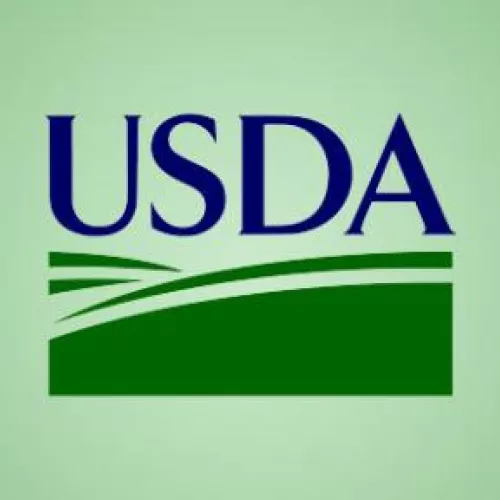USDA Rural Development State Director Colleen Landkamer today announced that USDA is seeking applications from rural small businesses and agricultural producers for funding to make energy efficiency improvements or to install renewable energy systems.
“Developing renewable energy presents an enormous economic opportunity for rural America,” Landkamer said. “This funding will help rural small business owners, farmers and ranchers incorporate renewable energy and energy efficiency technology into their operations, create jobs and help America become more energy independent. When small rural businesses and farmers cut their energy costs with cleaner and more efficient energy, we are both helping their bottom lines and reducing the amount of greenhouse gas pollution that affects our climate.”
The funding announced today is being provided through USDA’s Rural Energy for America Program (REAP). Investments from programs like REAP help support the true engine of America’s economic growth – a thriving middle class. REAP is one of many USDA programs and initiatives to support an expanded domestic energy economy. In addition to helping to increase renewable energy production, USDA makes investments in the bioeconomy, provides support for the emerging biobased products industry, supports new technologies, and supports energy efficiency improvements.
REAP funding is an example of the many ways that USDA is helping revitalize rural economies to create opportunities for growth and prosperity, support innovative technologies, identify new markets for agricultural producers and better utilize our nation’s natural resources.
Created by the 2008 Farm Bill, REAP was reauthorized by the recently passed 2014 Farm Bill. For fiscal year (FY) 2014, USDA plans to award up to $12.3 million in grants and $57.8 million in loan guarantees. Additional REAP funds provided by the Farm Bill will be made available with a subsequent notice.
USDA is accepting applications for:
- Renewable energy system and energy efficiency improvement loan guarantee and grant combinations;
- Renewable energy system and energy efficiency improvement loan guarantees; and
- Renewable energy system and energy efficiency improvement grants.
Requests for grants may not exceed 25 percent of a project’s cost – either for stand-alone grant requests or for grants combined with loan guarantees.
Since the start of the Obama Administration, REAP has supported more than 8,200 renewable energy and energy efficiency projects nationwide. During this period, Rural Development has invested more than $16.7 million in grants for over 680 projects with rural small business owners and agricultural producers throughout Minnesota.
In Worthington, MN, Colonial Laundry and Cleaners Laundromat owner Tara Kraft used a $10,510 REAP grant to help offset the cost of installing new energy efficient equipment. In midst of a much needed refurbishment project, Kraft wanted to find the right equipment that would best serve her customers and help her bottom line. With the help of USDA Rural Development, Kraft was able to purchase five new energy efficient commercial clothing dryers. The equipment was installed in fall of 2013 and is estimated to save Kraft over 50 percent in annual energy costs from what she was paying with the previous dryers. Additionally, customers are enjoying taking less time to complete their laundry. Kraft, a native of Trinidad, has owned the Laundromat since 2006 and operates the business with her niece and two daughters. Click here to learn more.
Information on how to apply for REAP funding and on the application deadlines (which vary by project type) is available on page 25564 of the May 5, 2014 Federal Register.
Grant applications are due July 7, 2014 and guaranteed loan applications are due July 31, 2014.
Click here to learn more and apply >>
REAP Webinar & Project Ideas
We recently held a webinar to walk participants through through the 2014 USDA Rural Development REAP funding cycle and example project ideas. The webinar recording and PowerPoint slides are available here for you to review.
In the webinar:
- Ron Omann, the State Energy & Environmental Coordinator of the U.S. Department of Agriculture Rural Development reviews key changes to REAP, eligibility to seek funds, filling out the application, and how projects are scored.
- Fritz Ebinger, the Energy Program Manager of The Minnesota Project, a partner of the Clean Energy Resource Teams (CERTs), provides several energy efficiency and renewable energy project ideas that have been implemented at small businesses and farms in rural Minnesota.
Project ideas: There are currently two programs offered through the Clean Energy Resource Teams (CERTs) that would be a great fit for REAP funding.
- LED Canopy Lighting for Service Stations The Light Up Your Station & Save CERTified Campaign offers an opportunity to reduce your canopy energy costs up to 75%, create a brighter and more attractive station, reduce your maintenance costs, and strengthen your business. The program from CERTs will help you access high-quality and competitively-priced canopy lighting products, as well as reduce upgrade costs with utility rebates.
- LED Lighting for Turkey Barns The Gobble Up Savings CERTified Campaign is helping turkey farmers reduce energy use by upgrading to LED lighting in their barns. Switching from high pressure sodium or incandescent lighting to LED lighting presents the greatest savings opportunity. CERTs will help you navigate your funding options to get LED lighting in your barns.
Click play below to watch the webinar:
Are you eligible? REAP is for all farmers, and for rural small businesses that are located in communities with populations less than 50,000. While businesses located in Rochester, Duluth, Mankato, St. Cloud, and the core of the Twin Cities wouldn’t be eligible, nearly the entire rest of the state is eligible (including many Metro suburbs and exurbs). Click here to see a map of rural ineligibility. Then, click on the link above the REAP program (among others), and then click Accept on the Property Eligibility Disclaimer. You’ll be routed to a map where you can enter an exact address to see clearly whether it sits in an ineligible area for REAP.


